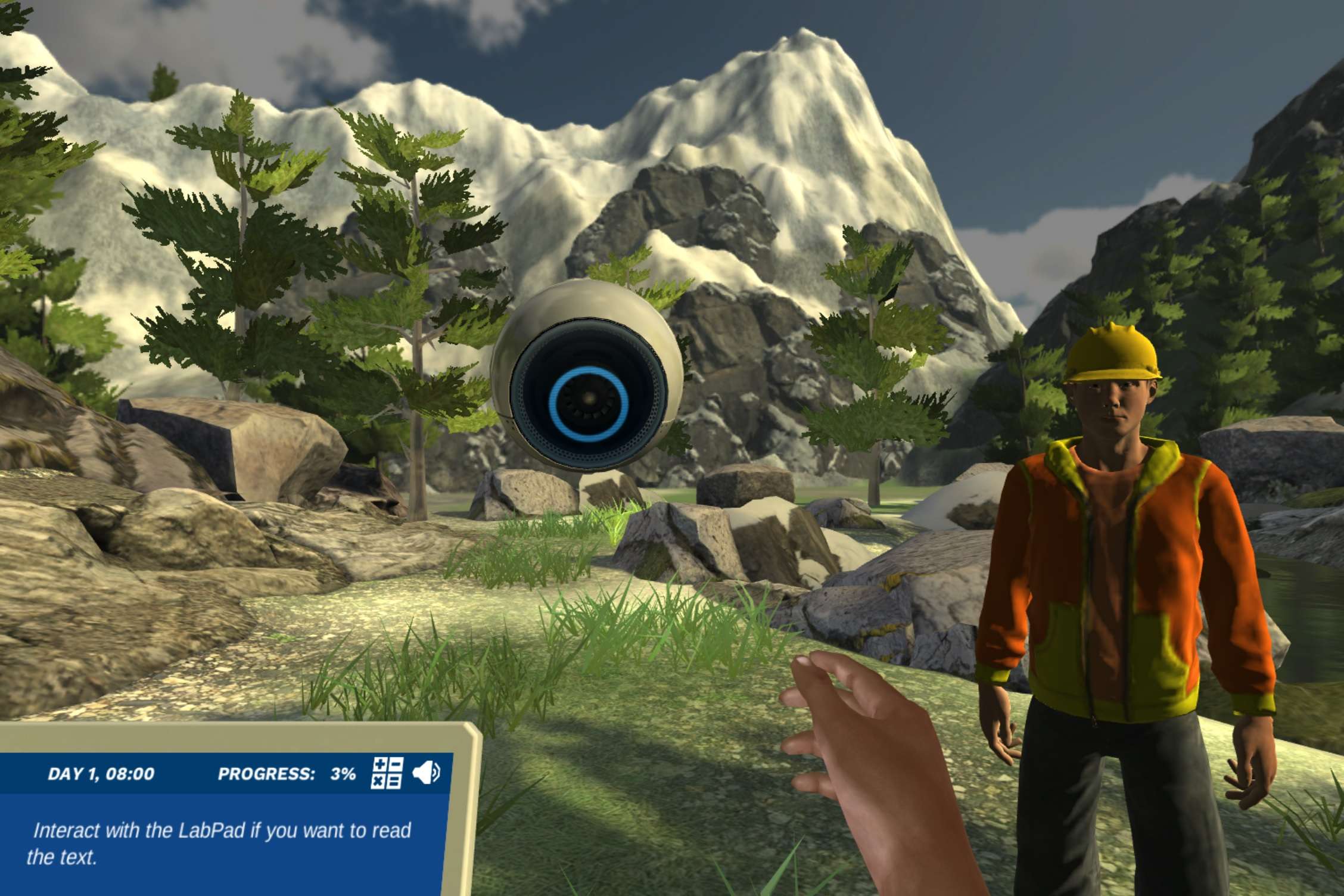Heading 1
Heading 2
Heading 3
Heading 4
Heading 5
Heading 6
Lorem ipsum dolor sit amet, consectetur adipiscing elit, sed do eiusmod tempor incididunt ut labore et dolore magna aliqua. Ut enim ad minim veniam, quis nostrud exercitation ullamco laboris nisi ut aliquip ex ea commodo consequat. Duis aute irure dolor in reprehenderit in voluptate velit esse cillum dolore eu fugiat nulla pariatur.
Block quote
Ordered list
- Item 1
- Item 2
- Item 3
Unordered list
- Item A
- Item B
- Item C
Bold text
Emphasis
Superscript
Subscript
About This Simulation
A property developer wants to turn a forest into an urban area. Dive into the water cycle and model how human influences can impact different hydrological processes.
Learning Objectives
- Differentiate Earth's stores of oceanic and fresh water and describe the different forms freshwater stores can take
- Describe connections between water cycle processes and hydrological stores
- Construct models of how human activity can impact infiltration, interception, and runoff and interpret the outcomes
About This Simulation
Lab Techniques
- Importance of the water cycle
- Length of the water cycle
- Earth’s water finite amount
- How human activities can impact different hydrological processes
Related Standards
- ESS2.C-M1
- LS2.B-E1
- Biology 2.2
Learn More About This Simulation
Did you know the water you’re drinking may have once been part of a glacier in the Antarctic? In this simulation, you will learn how water moves around the Earth in a continuous cycle. You will also look at how human activities, such as deforestation and urban development, can impact different hydrological processes.
Pinpoint key hydrological stores and processes
Explore an overview of the water cycle and identify different hydrological stores. You may be surprised to learn how much of the Earth’s water is stored in the oceans! Then, explore how different hydrological processes move water between these stores in an interactive activity. Learn the definitions of precipitation, evaporation, condensation, transpiration, infiltration, interception, surface runoff, and groundwater flow. Apply this knowledge to figure out where in the water cycle each process belongs.
Can you avoid causing a flood?
Using your knowledge of the water cycle, you will use a 3D model on our hi-tech holofloor to assess how human influences impact the water cycle. You will look closely at deforestation and urban development and how they affect interception, infiltration and surface runoff. You will have the ability to change different parameters and test your model to see if you manage to avoid flooding your town! You can repeat this activity as many times as you wish until you’re satisfied you have achieved the best possible outcome.
Help the property developer
At the end of the simulation, you will inform property developer Max about your findings so he can make an informed decision on his development plan.
For Science Programs Providing a Learning Advantage
Boost STEM Pass Rates
Boost Learning with Fun
75% of students show high engagement and improved grades with Labster
Discover Simulations That Match Your Syllabus
Easily bolster your learning objectives with relevant, interactive content
Place Students in the Shoes of Real Scientists
Practice a lab procedure or visualize theory through narrative-driven scenarios


FAQs
Find answers to frequently asked questions.
Heading 1
Heading 2
Heading 3
Heading 4
Heading 5
Heading 6
Lorem ipsum dolor sit amet, consectetur adipiscing elit, sed do eiusmod tempor incididunt ut labore et dolore magna aliqua. Ut enim ad minim veniam, quis nostrud exercitation ullamco laboris nisi ut aliquip ex ea commodo consequat. Duis aute irure dolor in reprehenderit in voluptate velit esse cillum dolore eu fugiat nulla pariatur.
Block quote
Ordered list
- Item 1
- Item 2
- Item 3
Unordered list
- Item A
- Item B
- Item C
Bold text
Emphasis
Superscript
Subscript
A Labster virtual lab is an interactive, multimedia assignment that students access right from their computers. Many Labster virtual labs prepare students for success in college by introducing foundational knowledge using multimedia visualizations that make it easier to understand complex concepts. Other Labster virtual labs prepare learners for careers in STEM labs by giving them realistic practice on lab techniques and procedures.
Labster’s virtual lab simulations are created by scientists and designed to maximize engagement and interactivity. Unlike watching a video or reading a textbook, Labster virtual labs are interactive. To make progress, students must think critically and solve a real-world problem. We believe that learning by doing makes STEM stick.
Yes, Labster is compatible with all major LMS (Learning Management Systems) including Blackboard, Canvas, D2L, Moodle, and many others. Students can access Labster like any other assignment. If your institution does not choose an LMS integration, students will log into Labster’s Course Manager once they have an account created. Your institution will decide which is the best access method.
Labster is available for purchase by instructors, faculty, and administrators at education institutions. Purchasing our starter package, Labster Explorer, can be done using a credit card if you are located in the USA, Canada, or Mexico. If you are outside of North America or are choosing a higher plan, please speak with a Labster sales representative. Compare plans.
Labster supports a wide range of STEM courses at the high school, college, and university level across fields in biology, chemistry, physics, and health sciences. You can identify topics for your courses by searching our Content Catalog.















